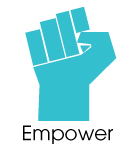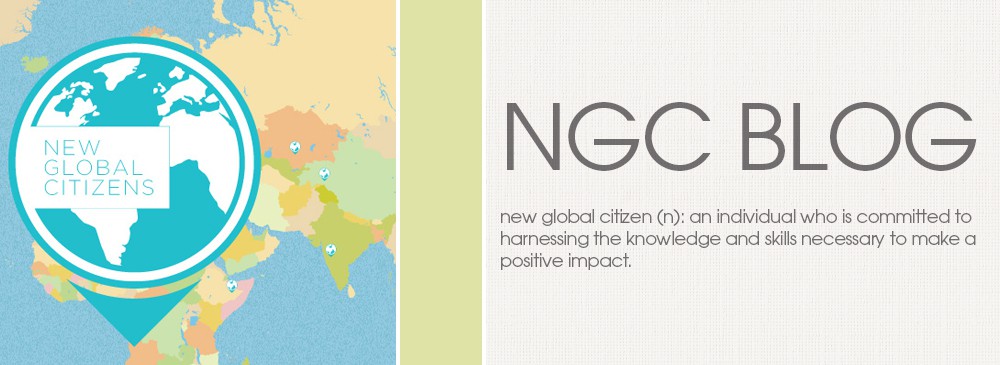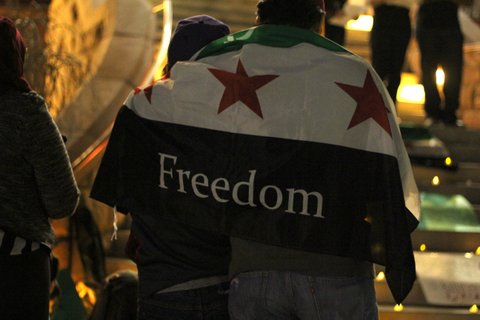Elizabeth’s friendship and compassion, so unexpected, opened me up to see the similarities between my world and the new world that I had walked into. Through such an unexpected friendship, I was able to see that my hopes and fears weren’t that unlike those of others across the world. Elizabeth wanted to finish her degree, return to her family (she had two adorable kids), and make the world a little better as a teacher. My friendship with Elizabeth taught me that compassion shown to another human can open up doors you might never imagine.
Monthly Archives: August 2013
#WHD2013: Commemorating ASU’s Save Our Syrian Freedom Activists
Linnea Bennett is a junior at Arizona State University studying journalism and political science. She is an intern with NGC this fall.
In March of 2011, protests broke out in Syria in response to the oppressive rule of President Bashar al-Assad. The protests led to fighting and the formation of a rebel army, followed by two years of intense violence and bloodshed. Syria’s civil war remains on-going as more of the country becomes engulfed in the conflict.
On this year’s World Humanitarian Day, my thoughts cannot help returning to a group of students at my home university, Arizona State University. These students have worked tirelessly in the last year to bring awareness to a situation that touches their lives very closely, despite the fact that it seems worlds away from most of their peers.
The students are a part of a group called Save our Syrian Freedom. Many of the club’s officers and members were either born in or have much of their family living in war-torn Syria. While these young activists may live in a nation of prosperity, their hearts stay with a country ravaged by violence.
I’ve watched the members of SOS Freedom raise money, paint signs, stage silent protests, hold vigils and do everything they can to spread the word about the violence and crimes their country has faced. They never stop working, even when few of their fellow students seem to care, even when the media won’t pay attention.
These students remind me why it is so important to be a global citizen. They have taught me to think of global issues not as textbook conflicts, but as events and problems that are affecting mothers, fathers, sisters, brothers, cousins and friends.
The world will always need more passionate, young activists like the SOS Freedom students, and I hope they continue their fight to educate our society on their country’s plight.
Cheers to SOS Freedom and the many world humanitarians on this special day.
Want to celebrate humanitarian efforts? Contact NGC about sharing a story on our blog.
Q&A With Suzy Vogt
Honored as one among 24 others who are making positive changes within their communities by Barret Honors at ASU, Suzanne Vogt is one of New Global Citizens Teacher Advisors who have contributed their energy towards making our Co-Curricular Program a success.
 NGC caught up with Suzy for a Q&A that, hopefully, teachers across the nation may find insightful!
NGC caught up with Suzy for a Q&A that, hopefully, teachers across the nation may find insightful!
How have you been shaped from teaching?
I love teaching global issues because it brings relevancy into my course, and students feel more empowered to engage in real life conversations in which other adults or near-adults are participating. Maturing my students through exposure to real-world global issues and their role in addressing those is a true hallmark of civic duty stressed in my social studies courses.
If teachers cannot adopt the Co-Curricular program in their classrooms, how do you suggest they begin to introduce the idea of global issues to their students?
There are multiple opportunities for teachers to teach global issues in the classroom. It may be through introductory/bell work activities as they relate to the content they teach or it may be a research project that takes topical course content and has students study the impact of those topics on the present day political, economic, social, or environmental issues that face various nations throughout the world. It is our job as educators to relate our content to present day events or students may not see the full extent to which classroom lessons relate to their lives. I assign current event reports on a bi-weekly basis. This simple assignment promotes student-led research, reading comprehension skills, and practice in writing summaries and analysis. The connections are always there; teachers just have to make them accessible for their students through crafty lesson planning.
What’s the biggest struggle you see when introducing or teaching certain issues? How do you see students overcome this struggle, and what, as a teacher, can you do to alleviate the struggle?
The biggest issue I see with students is a lack of knowledge about current issues in other countries, let alone the United States. This gap is not always attributed to apathy about the plight of others, but is often a developmental reality – my students are teenagers and the world directly in front of them is much more entertaining than seeking out information on something or someone they know little about. With instant access to technology it is tragic that many students do not access the news past entertainment or national disasters/crises as a point of curiosity or interest.
Students can overcome this deficiency in global awareness by personally taking  accountability to read the news daily and ask teachers, parents, and other support systems in their lives about the circumstances leading to the issues that impact different communities throughout the world. This prompting may not be intrinsic in students, but with school assignments that are engaging and teachers who stress the necessary 21st-century skills throughout their curriculum disengage or uninformed American youth will have more opportunities to participate in scholarly work or career choices that exposes them to the aspects of global citizenry.
accountability to read the news daily and ask teachers, parents, and other support systems in their lives about the circumstances leading to the issues that impact different communities throughout the world. This prompting may not be intrinsic in students, but with school assignments that are engaging and teachers who stress the necessary 21st-century skills throughout their curriculum disengage or uninformed American youth will have more opportunities to participate in scholarly work or career choices that exposes them to the aspects of global citizenry.
It is a teacher’s professional responsibility to stay abreast of current events and transmit non-biased, objective information to students as often as possible and relate it to their subject matter when applicable. Of course some subjects naturally lend themselves to this type of integration. For many students their knowledge of world issues will occur inside school walls due to differing home and family structures that may not include “dinner table conversation” on current events as mine did. Because of this, informed and motivating teachers are the key to “socializing” students to global issues and their ability to become positively involved through advocacy or direct action.
What have you learned from the students?
I have learned from my students that they know less than they think they know about global issues. This does not mean that the students are ignorant or display apathy, but they have not had the exposure yet in their lives. Once they learn, though, they are often hooked and want to know more about what they can do at their age and with their resources. The students often take on leadership roles and develop more formal communication skills as they learn how to support and promote education about an issue they feel strongly about.
What changes have you seen in your students? Have you seen such change start to develop across campus?
NGC does not have a club or prescribed course presence on my campus, but in my own practice I have seen students’ interest pique during conversations about the reality of global issues in the PRESENT DAY instead of in a historical context. These topics have generated original thought and epiphanies on the part of my students during discussions. I am constantly impressed by their sensitivity and empathy towards those who are less fortunate seeing as most of my students receive some type of government assistance within their family. Although not all students are moved to action, they do recognize that their awareness does not allow them to “ignore” the issues knowing that we are interconnected in a global economy, political structure, or just as human beings.
(I know that sounds peachy, but they’re teenagers, and that is seriously an accomplishment to get them to think about someone other than themselves)
To learn more about our Co-Curricular Program, click the image below:
Going to Azerbaijan: Wait, where is that?
Blog post by Maggie Broderick, NGC’s Program Coordinator
In July, 2013, I traveled to Azerbaijan as an adult participant in an American Councils’ Youth Leadership Program (YLP). Before I began the application process, I wasn’t even able to locate this country on a map, which was what made me determined to go in the first place. I consider myself a globally aware person, and yet, I had no idea this rich culture even existed. For three weeks, I fully immersed myself in Azerbaijani life and pushed myself out of my comfortably padded box.
During college, I was able to travel to countries around the world including El Salvador, Costa Rica, Mexico and England, but Azerbaijan is by far the most culturally rich melting pot of them all.
Situated south of Russia and north of Iran on the Caspian Sea, Azerbaijan is a land of countless influences. Nine million people and 70 different ethnic groups inhabit Azerbaijan, which is about the size of Maine. Depending on who you ask, Azerbaijanis identify their cultural heritage as Eastern European, Asian or Middle Eastern. From my very first day, I was in awe of the diversity in Azerbaijan.
What I will remember most about my YLP experience is not the balmy weather or even delicious cuisine, but the hospitable, intelligent and inspiring hosts.
In Azerbaijan, I saw firsthand how quickly people can connect when they make the conscious effort to accept one another despite cultural differences and language barriers. As a result, lifelong bonds were formed between individuals from around the world who would never have crossed paths otherwise.
In a few weeks, Azerbaijani high school students will come to Washington and Arizona for a month. I cannot wait for the opportunity to welcome our foreign guests and continue our partnership to develop social entrepreneurship and volunteerism in both of our countries.
For more information:
Read the YLP participants’ blog here
Learn more about Azerbaijan here
Explore exchange opportunities here







